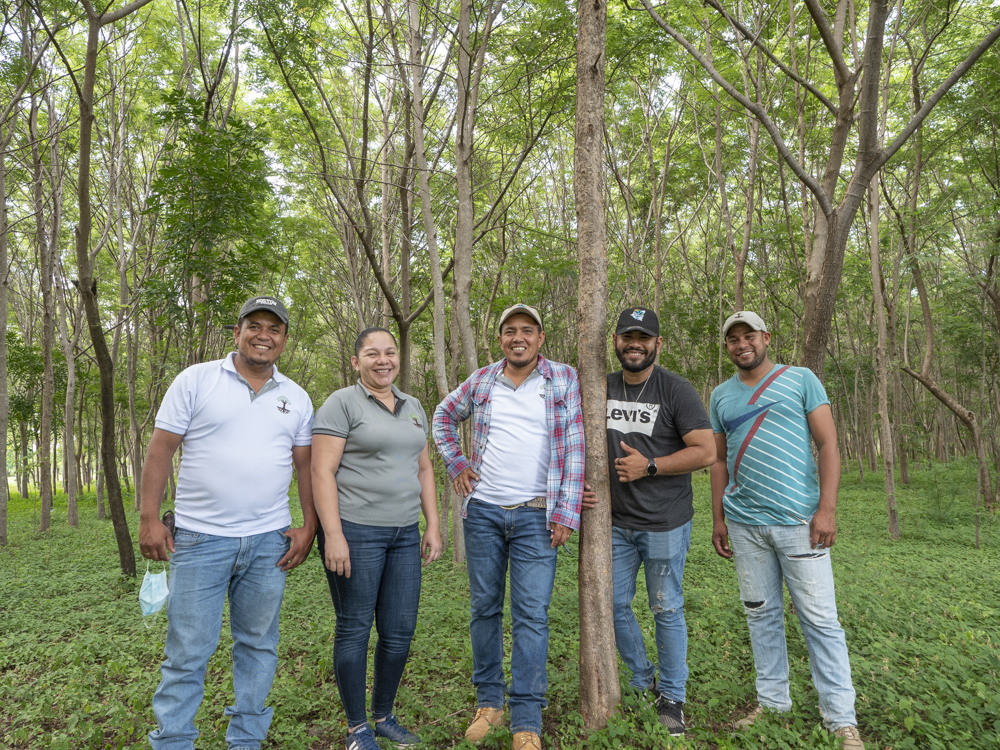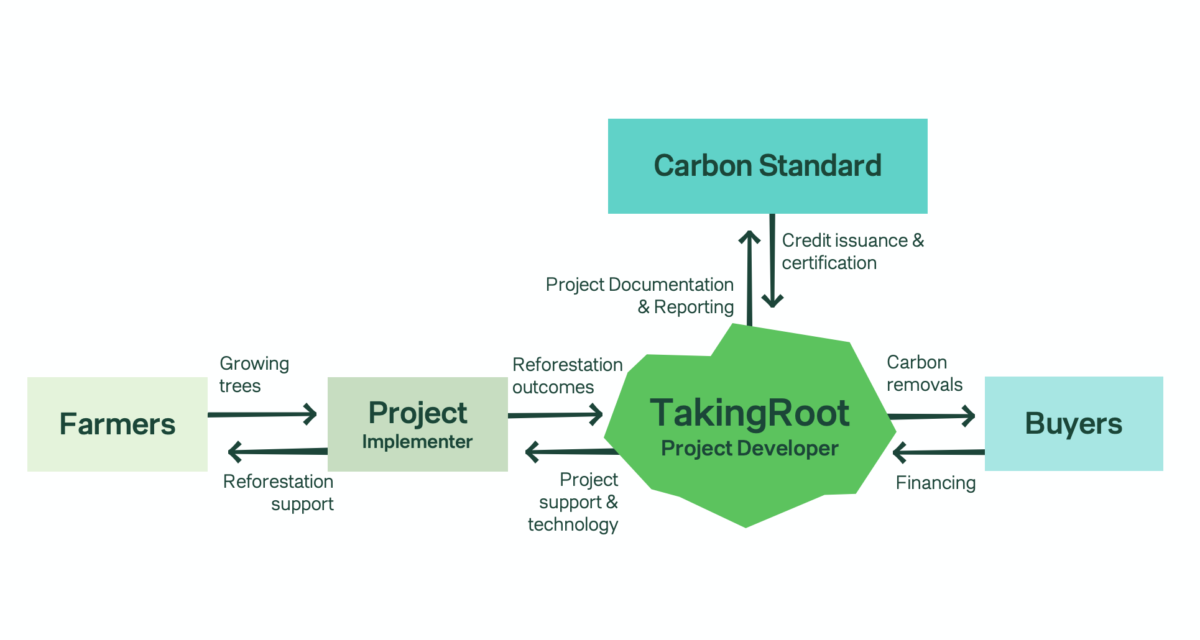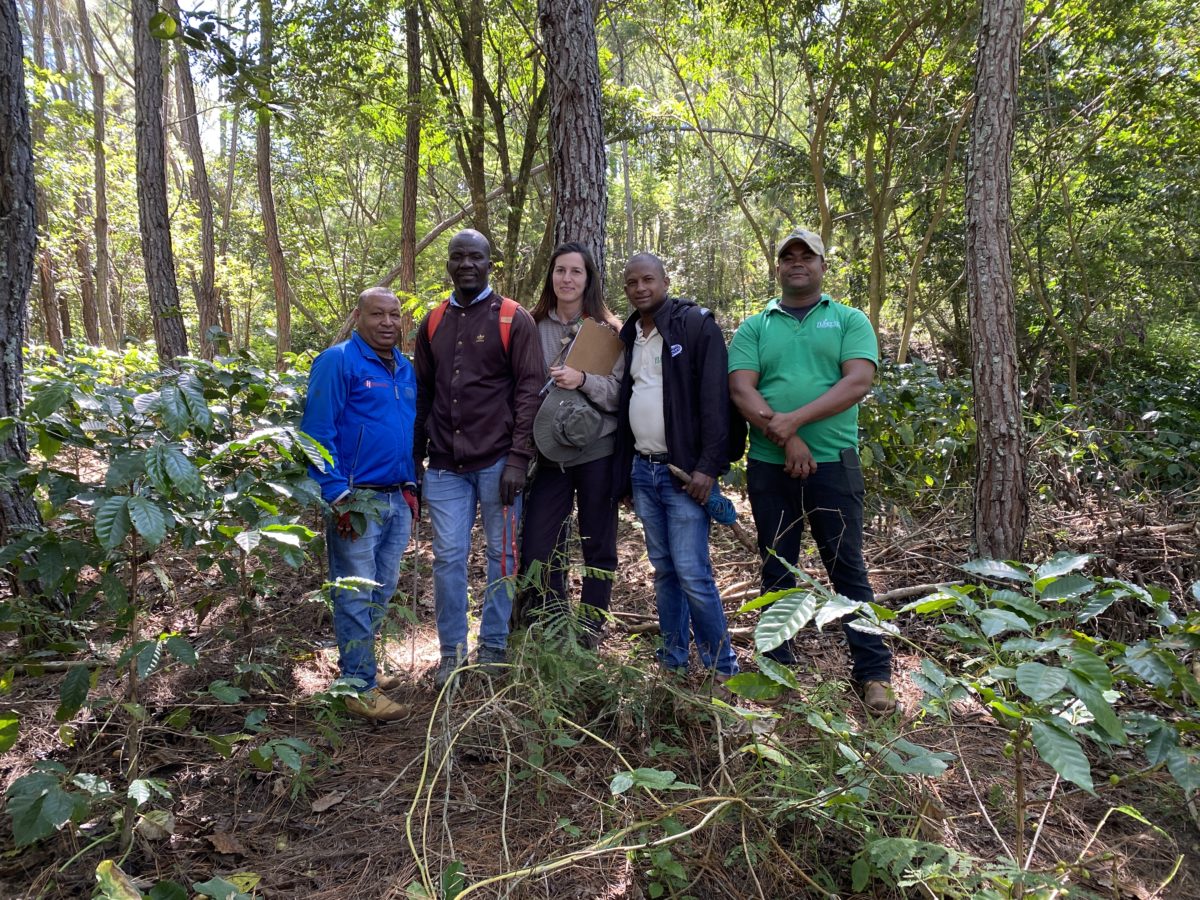We’re losing the world’s forests, which also means that ecosystems, livelihoods, and climate are at risk. Taking Root was born out of the desire to address these risks. Our purpose is to restore the world’s forests, and to do so in a way that serves both local land stewards and nature. For the past 15 years, our flagship project – the CommuniTree Carbon Program – has done just that. It has grown to be the largest reforestation initiative in Nicaragua, and last year issued over one million certified carbon credits. Now, we’re looking to expand our impact to new projects which hold a similar potential for scale. This is imperative, as the future of the planet depends on the actions we take today.
Why we’re ready to grow to a multi-project model
Taking Root’s intent has always been to scale so we can pursue more impact. The enormity of the connected challenges we face of the climate crisis, biodiversity loss, and the degradation of the natural world demands that we do so. We have successfully grown CommuniTree, and extending the project’s reach remains an organizational priority. Now, thanks to a convergence of factors, the time is right to create yet more impact through the development of new forest restoration projects.
First, there is a rise in demand for high quality nature restoration and carbon removals. The triple planetary crisis is becoming ever more apparent, compelling more and more corporates to invest in nature-based carbon removals. The market has shown its willingness to support forest restoration, presenting the perfect conditions to build our portfolio of reforestation projects.
Second, we are confident in our ability to develop, manage, and scale projects with care. CommuniTree is a testament to that. We began working with a handful of farmers. Now, we’re restoring forests with thousands of smallholder families across Nicaragua. With CommuniTree, each phase of growth brought new challenges: how do we recruit more farmers to the program? How do we manage thousands of parcels of land across an entire country? How do we ensure consistency across project operations? We learned how to answer these questions and adapted accordingly. This led us to invest in the local team, develop our technology platform, and create standardized training programs. It has been a learning curve, and one that has equipped us with the expertise needed to understand how to start and grow a high-quality and scalable reforestation project.

Third, beyond CommuniTree, we’ve spent multiple years exploring proof of concepts with more than 10 different partners across Latin America and Africa. This taught us the importance of working with partners who are aligned with Taking Root’s values, have on-the-ground leadership, and want to create largescale forest restoration and agroforestry projects with smallholder farmers. These learnings have informed our viability criteria for developing new projects, shaping our end-to-end model.
Collectively, our experience over the past decade and a half has laid the groundwork for success. Developing a high-quality carbon removal project isn’t easy. We have taken the time to understand exactly how to support a project so that it improves livelihoods and brings value to local communities. We have developed rigorous methodologies that align with the Plan Vivo Standard for the creation of certified carbon removal credits. Plus, we have built a technology platform that makes it easy to collect and manage the data required to report on projects and carbon sequestration. Together, these elements form a toolkit that can be applied in new geographies, allowing us to be efficient and effective in the expansion process.

Taking Root’s expansion work
Until recently, there was just one missing link: a team to lead the development of new certified carbon removal projects. Over the past year, we have bridged this gap by assembling a dedicated Expansion team with experience in project development , environmental and carbon policy, carbon modeling, partnership management, and business – the latter being vital to secure funding for the early stages of project development. The team explores expansion opportunities by performing in-depth analyses of host country frameworks, partner alignment, and project economics. The findings are compared against our strict viability criteria, which have been devised to ensure we build for both success and scale.
Projects that look to meet our viability criteria then go through a thoughtful and transparent feasibility assessment. This outlines what land-use opportunities exist in that region, and what the project operations would entail. These considerations are adapted to the community and the unique drivers of deforestation in that area. This is essential to the durability of a project. After all, what incentivizes smallholder farmers in Nicaragua to grow forests over the long-term might not necessarily apply in other contexts. Such meticulous due diligence is imperative, as we wish to be very deliberate in choosing the right expansion opportunities: namely, those that have the potential to create meaningful impacts.

Our commitment to creating meaningful impacts
The initial project screening and feasibility assessment are just the first steps of the process. There follow multiple stages to project certification. Extensive stakeholder engagement with local communities, funders, and governmental bodies is needed to design the project. Once a project is designed and certified, our work continues as we partner with the local team to manage operations, build capacity, and create robust carbon removal credits.
The entire process can take years to come to fruition, but the timeframe is necessary. At Taking Root, we do not want to just accelerate the restoration of the world’s forests; we want to do so in a high-quality way focused on creating long-term forest cover and durable carbon removals. Growing trees in partnership with smallholder farmers can be an incredibly effective tool in mitigating climate change, improving livelihoods and restoring ecosystems. However, a project must be designed and managed with care if it is to bring value to land stewards, the planet, and the market. Taking Root has the infrastructure to do just that and is now looking for partnerships and funding to support our expansion efforts. This is an incredibly exciting time for the organization as we continue to grow CommuniTree and build new projects to further our purpose to accelerate the restoration of the world’s forests.